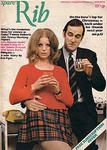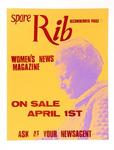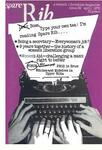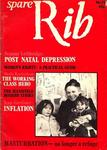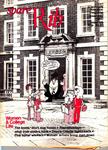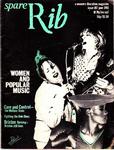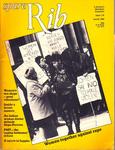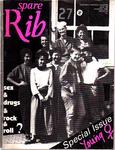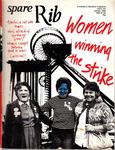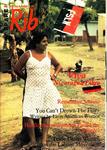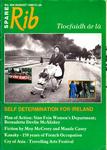Spare Rib (Magazine, 1972-1993)
type=digital_archives
"Set up [in 1972] to, at that time, provide a feminist alternative to the conventional women's mags. Monthly, printed by a commercial publisher. Circulation: 20,000. Distribution: commercial distributor, PDC, subs, conferences, etc. Costs: £2,500 per issue, and SR is self financing. 15/16 women work on SR, some full and some part time. They work collectively, though some of them have specific tasks. Closed collective, paid for their work. Work a 5 day week. SR is aimed at all women, both in and outside the WLM [Women's Liberation Movement], and contains regional and national and international news and info. Ed. policy: collectively decide on articles that they publish, and work closely with the contributors. Accept articles from men only when there is no other resource available. 35p per copy".
- Information from the "Directory of Women's Liberation Newletters, Magazines, Journals...", by Dena and Shaila (York, UK), c.1978
‘Spare Rib’, one of the most prominent feminist magazines that emerged at the time was launched in June 1972 in Britain. It was not received well by all and WH Smith was only one of newsagents who refused to stock the magazine on its shelves. Despite such obstacles the first issue of ‘Spare Rib’ sold out and after this a small but respectable circulation of around 20,000 copies per month was maintained[2]. However, such magazines were often passed around at feminist meetings or in one of the ‘floating library’ systems of exchanging literature that was established in cities such as Bristol. This was partially due to the fear of some women of the reaction of their husbands if such a magazine was delivered to or found in the home. In addition, many women did not have the financial independence to purchase such a magazine. One reader’s letter to Spare Rib comments,
‘Could I afford to buy your magazine I would support it wholeheartedly financially as I do otherwise. I think it serves a definite purpose amongst the ‘men’s’ magazines on the one level and the ‘knitting’ etc. mags on the other – lying on the shelf at the newsagents.’
The actual readership of such a magazine may then have been much wider.
Many of the founders of ‘Spare Rib’ such as Marsha Rowe and Rosie Boycott were formerly involved in the underground press of the 60s that had experienced great success with the advent of liberal movements. This was reflected in the look and style of the magazine which shunned the glossy style of women’s publications such as ‘Cosmopolitan’ in favour of a look that imitated the bold, simple style of the newsletters of the 60s underground press.
Its purpose, as set out in its editorial was to investigate and present alternatives to the traditional gender roles for women of virgin, wife or mother. Its early publications were linked closely with political theories of the time. In particular anti-capitalism was linked to women’s issues via the cosmetic industry’s exploitation of women’s insecurities and the pressure on them to be beauty-conscious. It also carried articles criticising the advertising industry and its encouragement of a materialistic consumer-culture. An early issue of the magazine for example contains an article criticising the attempts of kitchen firms to persuade women to perpetually update their homes. It states,
‘There is no such thing as an innocent design. In the drive to sell, design is used to convince consumers that products are continually new and improved.[3]’
However, feminists have in hindsight commented on the reluctance of the magazine to deal with one of the fundamental issues of Second Wave feminism; that of the personal being political.
Two of the founders of ‘Spare Rib’, Marsha Rowe and Rose Ades, commented on such problems in a talk given at the ‘Women and the Media’ conference in Bristol in July1974, saying,
‘It was rushed into, so we were not at all sure what we were communicating, and produced a self-conscious, still underground, political hotch potch.[4]’
Despite such problems though, ‘Spare Rib’ provided a lifeline for many women for whom it was sometimes the only means of contact with the Women’s Liberation Movement and emerging feminist thought.
[1] Todd, S. ‘Models and Menstruation: Spare Rib Magazine, Feminism, Femininity and Pleasure’ [attached]
[2] Ibid
[3] Jones, K. ‘Spin-off or Rip Off’, Spare Rib, 20 (1973), pp.15
[4] Rowe, M. ‘Spare Rib Magazine and its relationship to the Women’s Movement’ in Women and the Media Conference Report (1974).
Information on Spare Rib from "Feminist Publications", http://www.bristol.ac.uk/Depts/History/Sixties/Feminism/publications.htm

